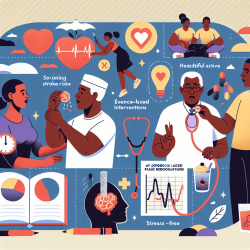As a Special Education Director, one of my primary responsibilities is to ensure that our therapists are equipped with the latest knowledge and techniques to provide the best possible care for our students. The research article "Lispers and Tongue Thrusters" by Gladys Reid Jann, reviewed by Marie Crickmay, offers valuable insights that can significantly enhance the effectiveness of speech therapy in public school settings.
Dr. Jann's research focuses on the re-assessment of lispers in the context of total orofacial muscle behavior. This holistic approach moves beyond traditional methods that solely aim to correct sound production. Instead, it emphasizes understanding and retraining the entire muscle dynamics involved in speech. Here are the key takeaways from the research and how they can be implemented to improve therapeutic outcomes:
1. Re-assessing Orofacial Muscle Behavior
Dr. Jann's research underscores the importance of evaluating the total orofacial muscle behavior in children who exhibit lisping and tongue thrusting. This involves a comprehensive assessment that looks at:
- Swallowing patterns
- Thumb-sucking habits
- Dental occlusion
By considering these factors, therapists can develop a more targeted intervention plan that addresses the root causes of articulation deviations.
2. Collaborative Approach
The research advocates for a collaborative approach involving speech therapists, dentists, and orthodontists. This multidisciplinary team can provide a well-rounded perspective on the child's condition, ensuring that all aspects of orofacial muscle behavior are addressed. As a practitioner, consider reaching out to professionals in these fields to create a support network for your students.
3. Practical Methods for Retraining
One of the most valuable aspects of Dr. Jann's research is the practical methods it offers for retraining orofacial muscle patterns. These methods include:
- Exercises to correct faulty swallowing patterns
- Techniques to reduce thumb-sucking
- Strategies to improve dental occlusion
Incorporating these exercises into your therapy sessions can help in creating more effective and long-lasting results for your students.
4. Continuous Learning and Adaptation
While the research provides a robust framework for addressing lisping and tongue thrusting, it is crucial to stay updated with the latest developments in the field. Attend conferences, read relevant publications, and participate in webinars to continually enhance your skills and knowledge.
Encouraging Further Research
Dr. Jann's booklet is an excellent starting point, but it is essential to keep exploring new research and methodologies. Encourage your colleagues to read and discuss the findings, and consider conducting your own studies to contribute to the field.
In conclusion, the insights from "Lispers and Tongue Thrusters" can significantly improve the effectiveness of speech therapy for children with articulation deviations. By re-assessing orofacial muscle behavior, adopting a collaborative approach, implementing practical retraining methods, and committing to continuous learning, therapists can provide more effective care for their students.
To read the original research paper, please follow this link: Lispers and tongue thrusters.










